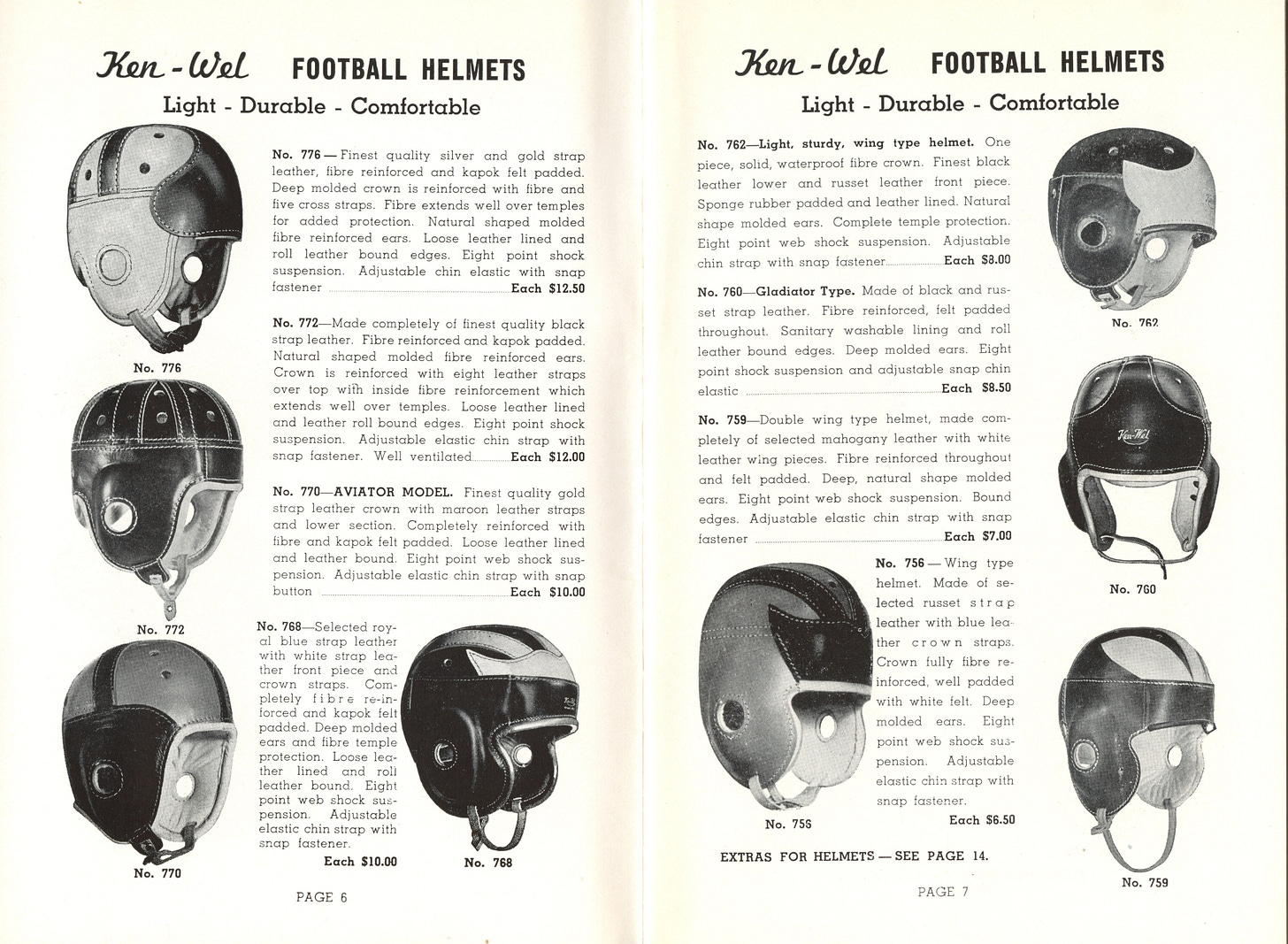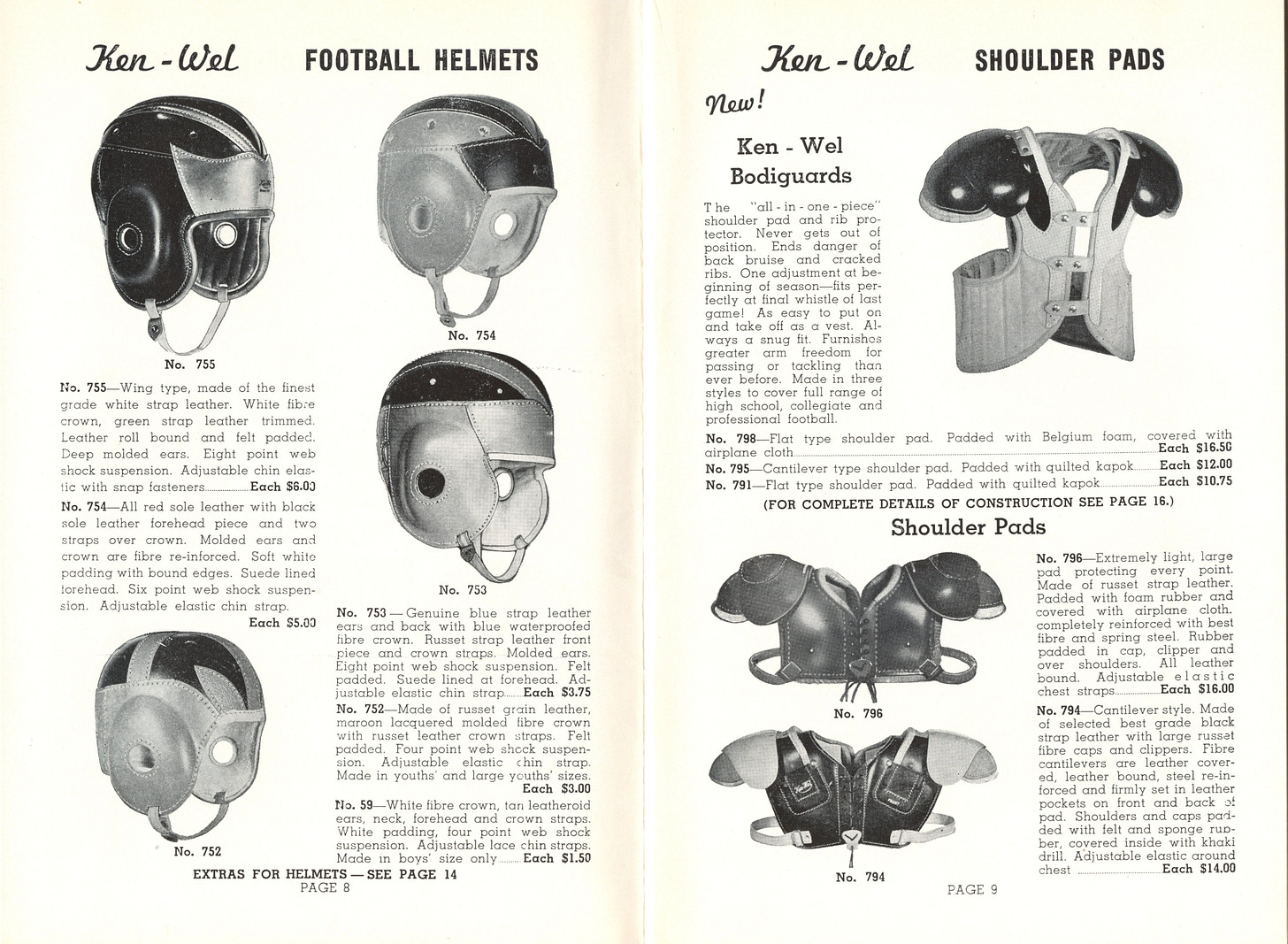Today's Tidbit... Oddballs in the 1938-39 Ken-Wel Sporting Goods
I've built a collection of vintage sporting goods catalogs to document the evolution of footballs, player equipment, officiating tools, and other minutiae. They cover multiple brands, but I only recently acquired my first catalog for the Ken-Wel brand.
I don't know much about the brand, though it was best known for its baseball gloves. Appropriately, the firm started in 1916 in Gloversville, New York, before moving to Utica. They produced Lou Gehrig's glove and one for Hall of Famer Dazzy Vance, the first patented glove with laces between the fingers. The company went out of business in 1960.
They made a range of football equipment, with a few oddball items we'll review shortly. Two other aspects of their equipment stand out. One was their preference for integrated equipment, such as pants with the pads sewn in, rather than being removable and interchangeable. (See the earlier article below.)
Another issue is that Ken-Wel showcases the latest styles and earlier generations in the same catalog. This tendency crosses industries, but this catalog has a fun example we'll cover shortly.
Starting with helmets, Ken-Wel offered a series of leather winged helmet styles, a topic covered previously.
The original purpose of the wings on winged helmets was to provide additional padding for the forehead and temples. However, the designers took some artistic license, so the varying designs differentiated teams like logos do today.
Models No. 759 and No. 752 are most noticeable, which another manufacturer called their Mercury design. Mercury's wings do not appear to have a functional reason; instead, they resulted from the designers' flight of fancy. (For those interested, a Ken-Wel "Mercury" model can be had for $225 on eBay today, and I don't get a commission if it sells.)
Also notable on the second page above is the Ken-Wel Bodiguard, which integrates shoulder pads and what were called blocking pads at the time. Players on offense could not use their hands when blocking until the late 1970s, but it was open season for blocking below the waist.

Those who executed rolling blocks sometimes were kneed in the ribs, so they wore blocking pads to prevent injury or protect an ailing rib.
Ken-Wel also produced a line of football pants, and most of those products followed the integration path, with the pants and pads delivered in an all-in-one package.
Ken-Wel's pants in 1939 also had leather covering the knees so they might wear better, a look seen in some period photographs.
Finally, I mentioned the issue of multi-generational products living together in the same catalog. The 1938-39 Ken-Wel catalog provides an excellent example in its basketball lineup. In A History of the Football, I described how inflatable footballs began using valves in about 1923. Until then, inflated balls across sports had external laces, which had to be unlaced and relaced to inflate the bladder inside the ball's leather cover. Valves that allowed the inflation of balls with a needle meant that most balls no longer needed external lacing.
However, since the lacing had become critical to throwing football's forward pass, footballs retained their laces while they disappeared from basketballs, volleyballs, and rugby balls in short order.
Ken-Wel lagged the industry for some reason since they still sold several basketball models with laces fifteen years after they began disappearing from other manufacturers' catalogs.
That's all I have from the 1938-39 Ken-Wel catalog. Enjoy your football weekend, and let me know if you spot anyone wearing a leather helmet with Mercury wings.
Football Archaeology is reader-supported. Click here to buy one of my books or otherwise support the site.









